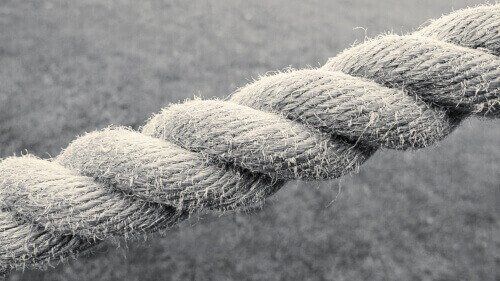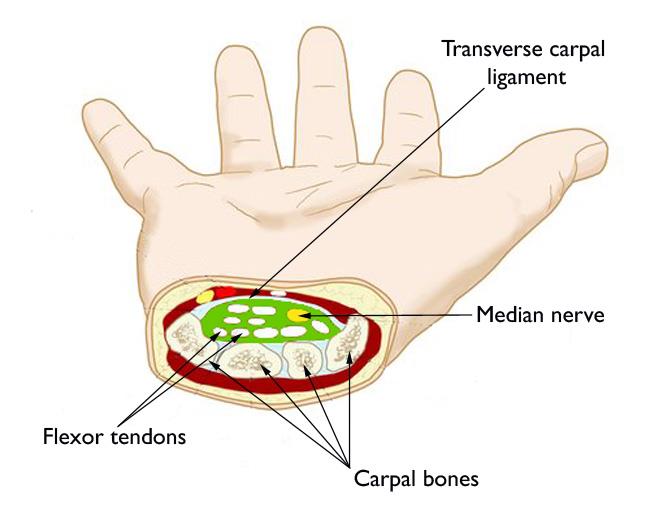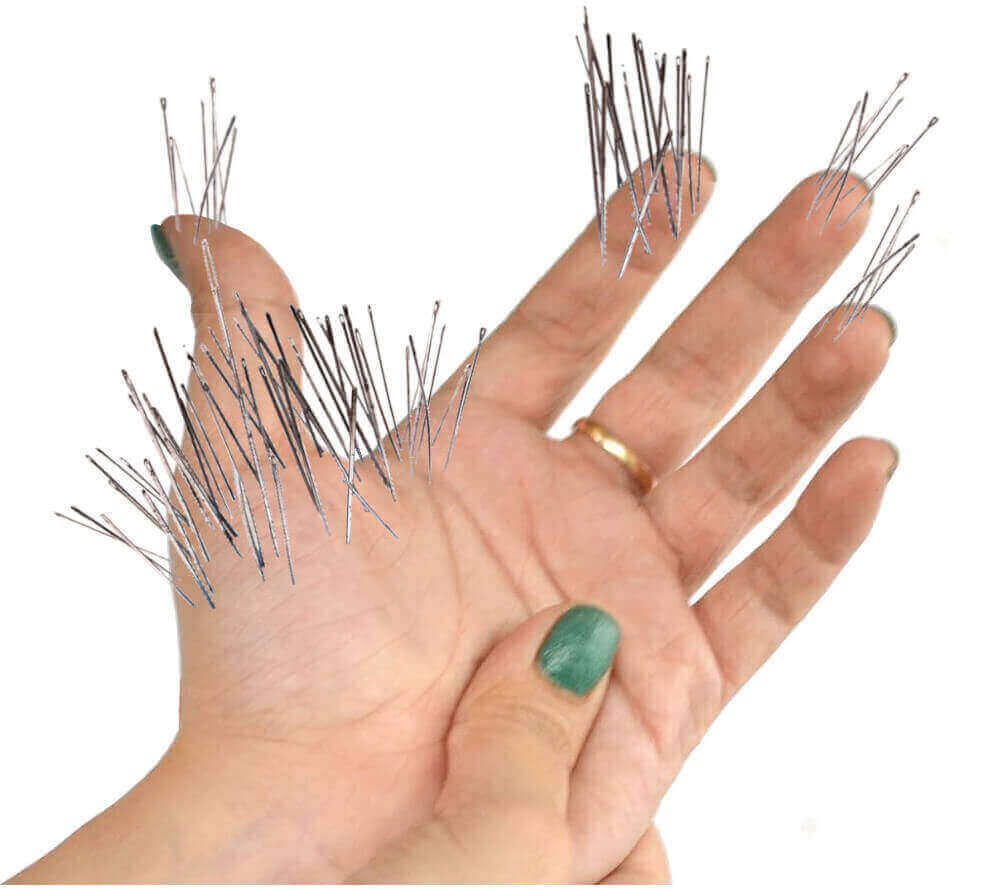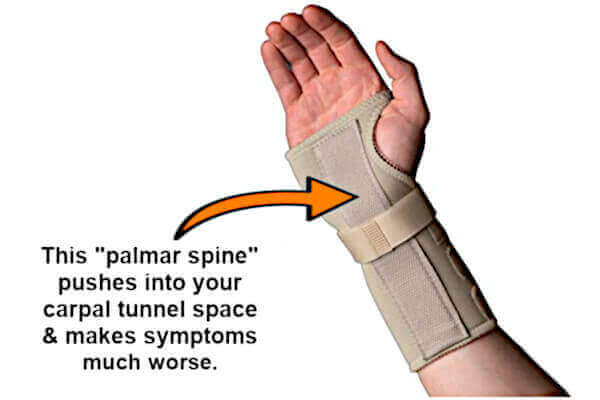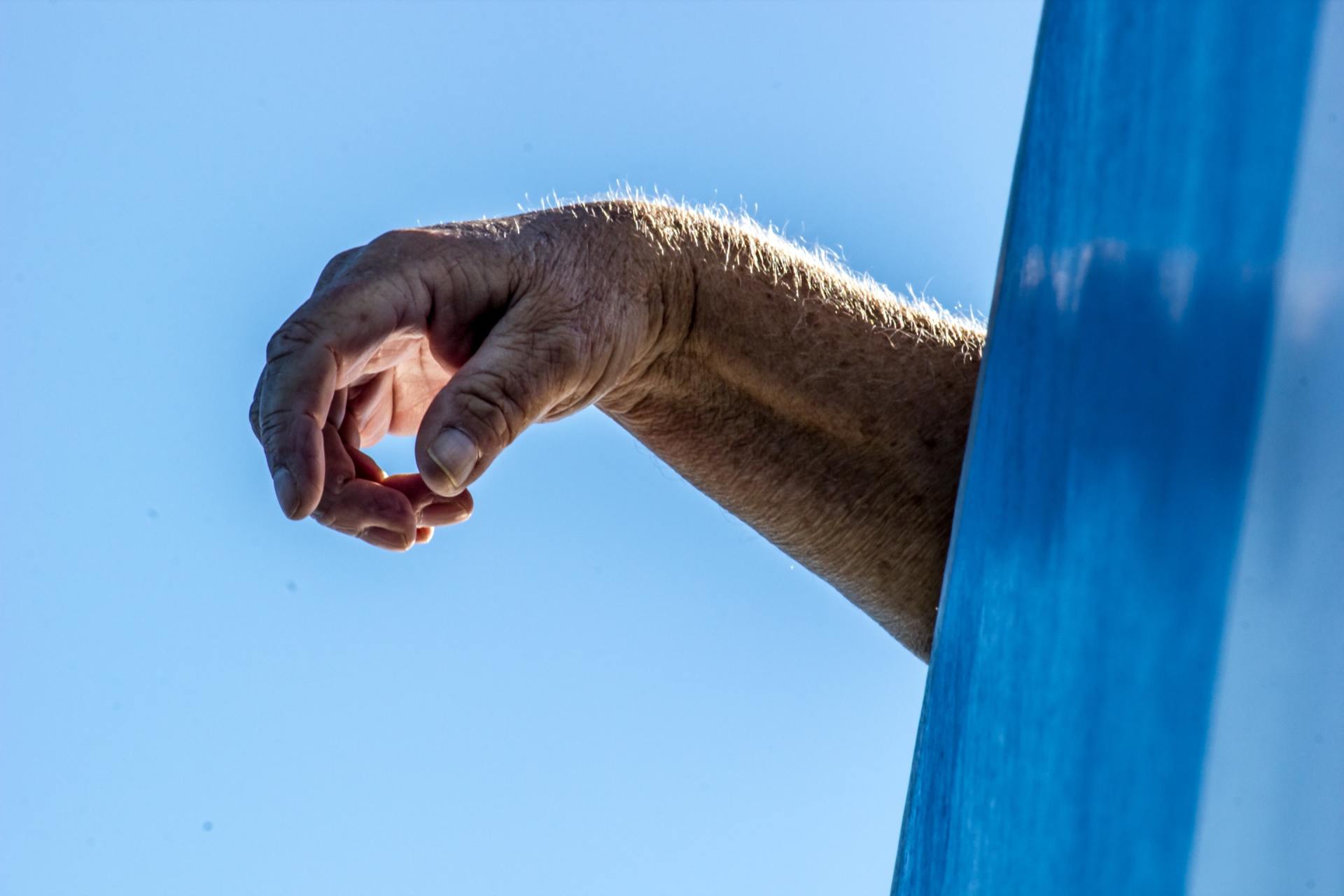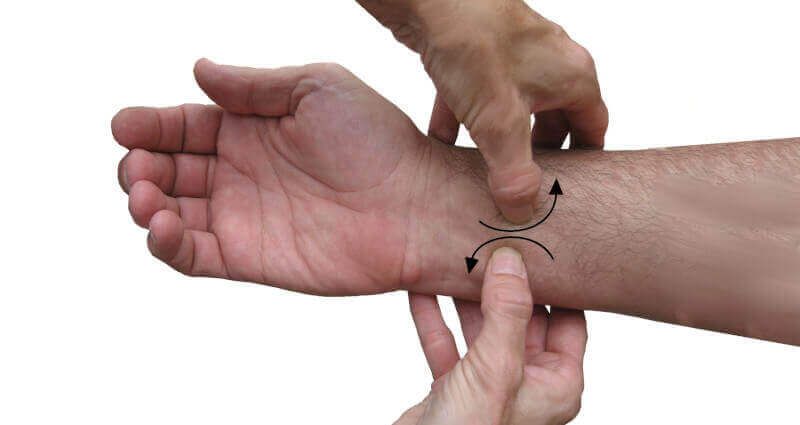Do You Have Hand Pain from Riding Horses?
Almost every seasoned equestrian has felt hand pain from horse riding at least once. And for some, it's a routine occurrence.
But it doesn't have to be.
I get lots of questions from "horse people" about hand pain and
carpal tunnel syndrome. I estimate it's one of the most common musculoskeletal complaints from equestrians.
Why is that?
Actually, you'd be
abnormal
if you work hard with your hands every day and never experience pain due to hand stress. Pain in the fingers, hand or wrist all are signs of overworked hands. So is having numbness, tingling, weakness, soreness and burning.
While these are the signs of overworked hands, they could also signal the onset of carpal tunnel syndrome.
Difference between simple hand pain & carpal tunnel
As mentioned, nearly everyone stresses their hands and feels pain once in a while. The source of the pain is usually from strained
flexor tendons. The mechanical stress produced (by excessive forceful gripping, for instance) causes tendons to have micro-ruptures or microscopic rips.
It's like a rope fraying under too much tension. Those frayed and loose bits cause tendons to get "sticky" - like having a lot of
adhesions. The adhesions restrict tendons from gliding smoothly.
Tendons react to these adhesions by producing inflammation. And the inflammation results in swelling. If the swelling happens in the fingers, palm or forearm, then simple rest will allow the tendon to heal on its own.
But if that swelling occurs inside the wrist joint, in a narrow passageway called the
carpal tunnel, then it's not just simple swelling anymore. That narrow passageway not only contains swollen tendons, but also the median neve.
The
median nerve is a major nerve of the hand. It carries sensations from the fingers and palm all the way to the brain. Those sensations include feelings like pain, touch, and temperature.
If the tendons swell inside the narrow carpal tunnel passageway, they also start to also crush the median nerve. It's that crushing that causes each and every
carpal tunnel symptom like pain, numbness, and tingling.
How horse riding damages the hand
Horses are obviously big and powerful animals. To properly control an animal that weights perhaps 1,500 pounds requires a tight grip on reigns and lead ropes. In fact, just riding for pleasure requires maintaining a good grip on the reigns, sometimes for hours without a break.
Gripping for long periods of time is
totally abnormal
to human physiology. It produces stresses on flexor tendons which are designed by Mother Nature only to grip and release periodically. And the grip and release should never be with a lot of force, and never for extended periods of time. Therefore the stress of constant gripping can push these tendons to their
physical limits.
Anybody who overworks their hands can stress their flexor tendons. So hand pain from horse riding is no different from hand pain from
hairdressing. Or hand pain from
keyboard use. Nor is it different from any activity where you grip something for long periods of time, like a snow shovel.
Extended forceful gripping is especially more harmful when you grip with force, relax, and grip with force again - over and over. Examples are digging a ditch, stocking grocery shelves, laying bricks, and moving furniture. The resulting symptoms are what doctors call
repetitive strain injury or RSI.
Today, one of the
most common RSIs in the United States is carpal tunnel syndrome. (Some people just call the condition "carpal tunnel".) In fact, carpal tunnel occurs in about
5% of the US population. The rate is steadily increasing, currently with about
250,000 new cases per year.
In short, hand pain from horse riding is common. It's also common for that pain to be the first warning sign of carpal tunnel syndrome.
The
first appearance of carpal tunnel symptoms can vary a great deal from person to person. In fact, no two sets of symptoms are exactly alike. The general rule is that if symptoms persist or worsen, it might be carpal tunnel syndrome and not just simple hand stress.
Also with carpal tunnel syndrome, pain generally first appears as soreness in the palm or fingers. Sometimes if feels like burning. Usually, your thumb is most affected. For sure, your little finger is
never
affected.
At first, the pain usually doesn't happen during the day. Instead, most people feel carpal tunnel symptoms first appear during rest, as when trying to fall asleep.
Such symptoms distinguish carpal tunnel syndrome from other conditions like
rheumatoid arthritis. More notably,
wrist tendonitis has the most similar symptoms. You can perform
self tests to see if you have carpal tunnel or tendonitis by
clicking here.
Relieving hand pain from horse riding
If your hand pain from horse riding is merely due to over-work, then it's relatively easy to treat. Simply refraining from the activity for a
couple weeks will allow your flexor tendons to repair the microscopic rips caused by over-stress.
But if your hand pain is due to carpal tunnel syndrome, it's a totally different situation. Actually, there is no real “cure” for carpal tunnel syndrome. If you have hand pain from horse riding (or any other repetitive, forceful activity) due to carpal tunnel, the most you can do is manage the pain and other symptoms.
And you can manage symptoms so successfully that they don't bother you anymore.
It’s like asking,
“What’s the cure for diabetes?” There is none. But you can manage diabetes so it never bothers you.
Likewise, you can manage carpal tunnel syndrome very effectively. Even though there's no cure, there are
several carpal tunnel treatments you can use that don't involve surgery. Most are so effective that symptoms will never return.
The most successful remedy for carpal tunnel syndrome I’ve ever recommended to patients is the combination called
B.R.E.M.
It stands for
Brace, Rest, Exercise, Massage.
Bracing
Rest
Exercises
Massage
Conclusion
Hand pain from horse riding - or from any other strenuous activity - is miserable. It means that griping ropes and lines are stressing your hands and tendons to their limits. If the pain is due to simple stress, then merely resting your hands will restore their health. But if the pain is due to carpal tunnel syndrome, you need more aggressive therapy so that symptoms don't progress further. A combination of rest, night bracing, stretching exercises, and myofascial release massage will eliminate carpal tunnel symptoms in most cases.



